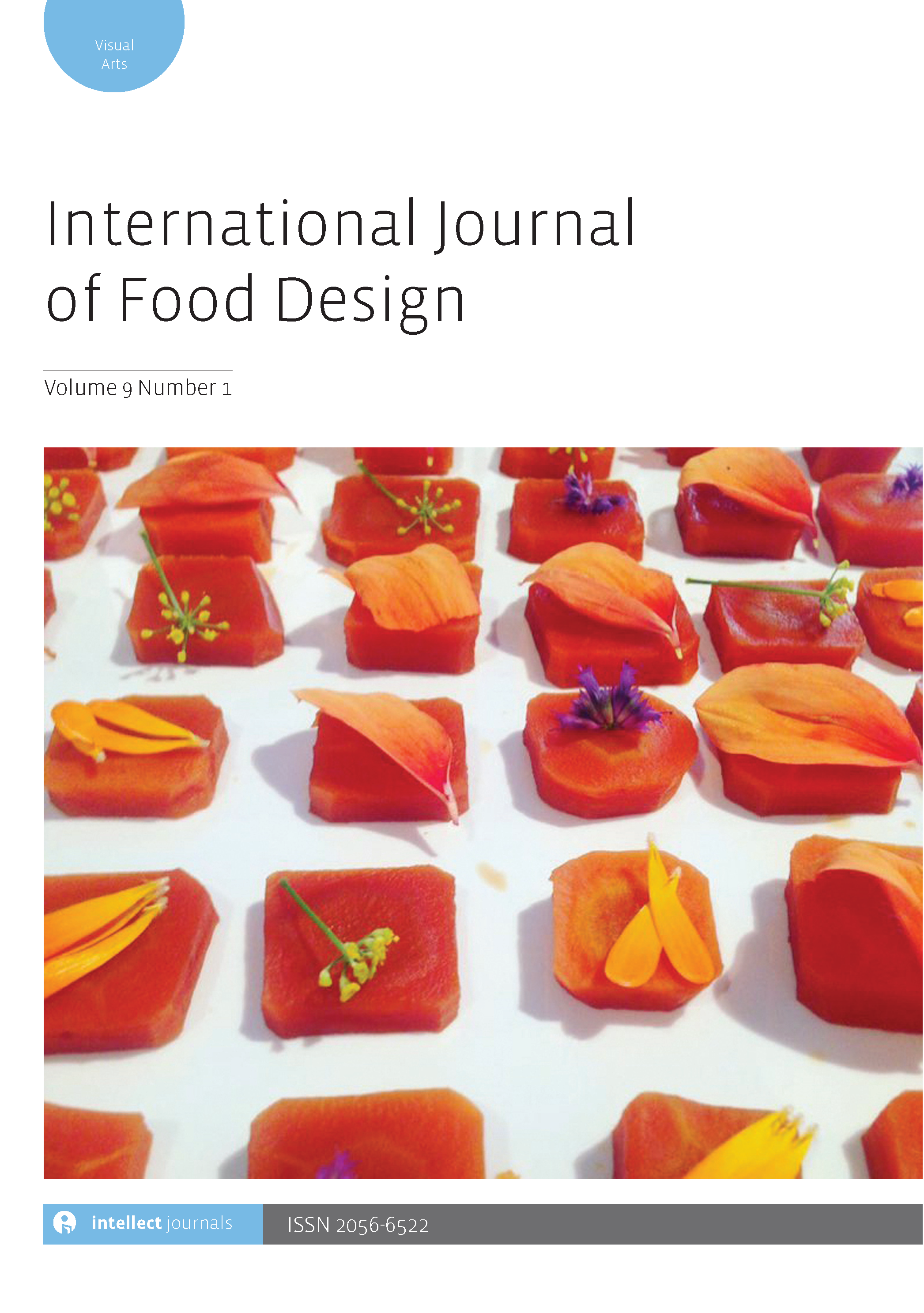-
oa Transformational design for food systems: Cultural, social and technological challenges1
- Source: International Journal of Food Design, Volume 8, Issue Designing Digital Technologies for Sustainable Transformations of Food Systems, Apr 2023, p. 109 - 132
-
- 24 Oct 2022
- 24 Dec 2022
- 10 Apr 2023
Abstract
Due to climate changes, resources availability and evolving markets, the food system is developing towards an articulated and complex ecology, with fast transformations occurring in food production, preparation, delivery and disposal. In this context, innovation is needed not just to ideate solutions to deal with a fast-changing system but also to accompany the change adopting a systemic long-term approach. We reflect on the transformational potential of design in the food sector enabled by digital technologies, one of the current major drivers of change. We define two levels of changes implying digital technologies, those that radically change the food system and those enabling changes within a given system. These levels are exemplified with case studies documented in literature and with students’ projects showing how transformational design can help grasp the complexity of current problems, and question the current status quo by facilitating a dialogue among stakeholders to stimulate behaviour change without prescribing it. In this article we encourage a paradigm shift of design from craft activity to a holistic approach of systemic thinking where the designer assumes the role of promoter and facilitator of change. Reflections on challenges at cultural, social and technological levels are provided in the conclusion section.



